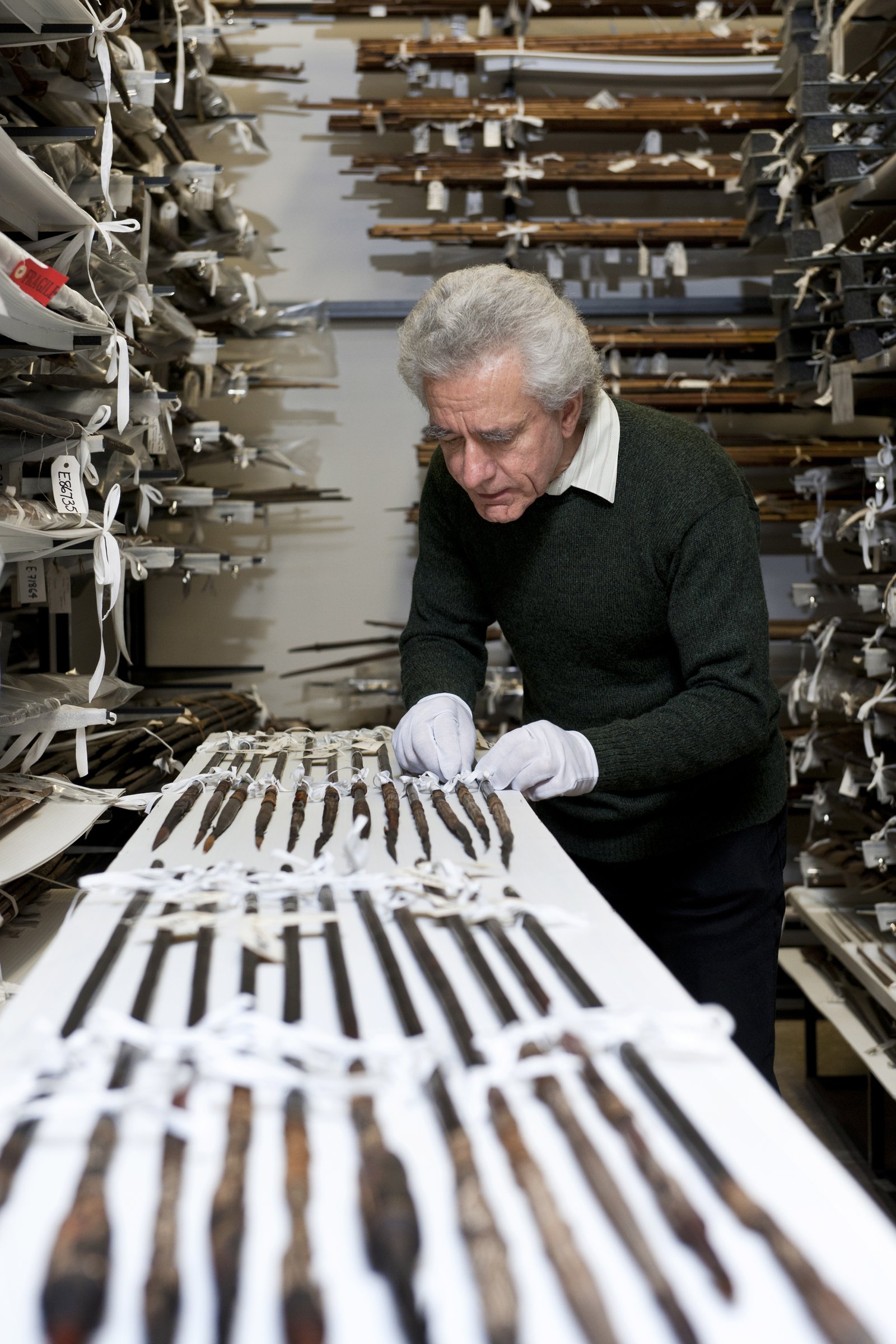Garden Palace Survivors
On this page...
In a fire that could be seen across Sydney, the collections were almost entirely destroyed when the Palace burnt down in 1882.
In 1999, while preparing a catalogue of the Australian Museum's Torres Strait collection, Dr Stan Florek found some probable surviving objects from the Garden Palace fire. He noted that there was a similarity between the description of 18 'man' arrows that had been registered in 1910 under the heading 'Old Collection' and objects
The objects catalogued in 1836 were collected during a rescue mission sent to Torres Strait to search for survivors of the Charles Eaton, which sank there in 1834. The rescue party brought back the only two survivors of the wreck and at least 45 artefacts, including bows and arrows from Mer Island. This was one of the earliest collections of cultural material in the Australian and Papua New Guinean regions presented to the Australian Museum.
As there is no other documented acquisition of 'man' arrows from Torres Strait in the collections after 1836, it is likely that these arrows are almost certainly the survivors of the 1836 rescue mission - and the Garden Palace fire.
These arrows are often called 'man arrows' on account of the human form incorporated in their design. They were probably made on the Papua New Guinea mainland and traded to the Torres Strait Islanders. The Australian Museum has a wooden human figure in the same style, collected in 1884 from the Mai Kussa River, Papua New Guinea.

Dr Stan Florek with the arrows
Image: Stuart Humphreys© Australian Museum

